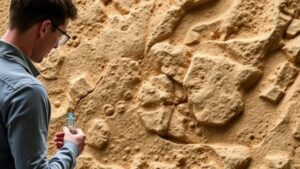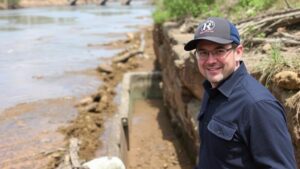How Nautical Map Errors Point to Forgotten Shipwreck Sites
How Nautical Map Errors Point to Forgotten Shipwreck Sites
The study of nautical maps has long been considered a vital tool in safe maritime navigation. But, the existence of errors within these maps can lead not only to navigational hazards but also to the unearthing of forgotten shipwreck sites that lie beneath the waves. This article aims to explore the relationship between map inaccuracies and the rediscovery of historical wrecks, with an emphasis on cited examples, statistical evidence, and potential future implications for marine archaeology.
The Significance of Nautical Maps
Nautical maps, or marine charts, represent a complex amalgamation of navigational information designed for safe sea travel. Historically, these maps have evolved to include not only geographical features but also navigational aids such as buoys, lighthouses, and depth measurements. According to the International Hydrographic Organization (IHO), accurate nautical charts are paramount in preventing maritime accidents, with a reported 75% of maritime incidents attributed to navigational errors or chart discrepancies (IHO, 2021).
Historical Context of Shipwrecks
The waters of the world are littered with the remains of ships lost to the ravages of nature, warfare, and human error. Historical records indicate that numerous vessels have been lost along coastlines due to a combination of poor navigation, inclement weather, and uncharted underwater hazards. For example, the 1915 sinking of the passenger liner SS Eastland in Lake Michigan resulted in the loss of 844 lives, a tragedy exacerbated by navigational miscalculations (US Coast Guard, 2015).
Mapping Errors and Their Impact
Nautical map errors can take various forms, such as incorrect depth readings, uncharted rocks, or discrepancies in coastal geography. These inaccuracies may lead to maritime incidents but can also provide clues to the locations of forgotten shipwrecks. For example, in 2018, researchers used outdated nautical maps of the Irish Sea to identify a shipwreck from the 1940s that had been lost to history, later confirmed using sonar technology and underwater robotics (UK Maritime and Coastguard Agency, 2018).
- Incorrect depth reading causing a ship to strike the seabed.
- Failure to include significant underwater features leading to navigational errors.
Case Studies of Rediscovered Shipwrecks
There are multifaceted examples of how nautical map errors have led to the rediscovery of shipwreck sites:
- The USS Conestoga: After disappearing in the Bermuda Triangle in 1921, it was rediscovered in 2015. Historical maps had inaccurately depicted the hazards around the area, contributing to its loss (NOAA, 2016).
- The losses in the Great Lakes: Numerous shipwrecks remain unidentified or incorrectly mapped due to issues with early nautical charts, affecting over 6,000 recorded incidents (Great Lakes Shipwreck Historical Society, 2023).
Technological Advancements in Marine Archaeology
Technology plays a crucial role in the identification and investigation of forgotten shipwrecks. Modern advancements such as LiDAR (Light Detection and Ranging) and high-resolution sonar scans can reveal previously obscured wrecks. The integration of these technologies with historical maps allows researchers to cross-reference areas known for inaccuracies, increasing the likelihood of finding lost vessels. This methodology was successfully employed during the search for shipwrecks in the Mediterranean, where old maps guided discoveries made with advanced sonar (European Marine and Safety Agency, 2020).
Future Implications for Maritime Research
As researchers continue to uncover forgotten shipwrecks through the lens of nautical map errors, there are valuable lessons to be learned. Accurately mapping the seafloor and using reliable data sources remains essential to preserving maritime history. Questions remain as to how many other uncharted ships lie beneath the surface, waiting to be discovered.
Conclusion
In summary, nautical map errors serve a dual purpose: they highlight navigational pitfalls and inadvertently guide researchers to forgotten shipwreck sites. Through historical analysis, case studies, and advanced technology, the marine archaeological community can utilize these inaccuracies to uncover lost maritime treasures. Moving forward, it is imperative that continuous efforts are made to enhance the accuracy of nautical charts, not only for safety but also for the preservation of maritime history.
Actionable Takeaways
- Marine archaeologists should prioritize the use of historical nautical charts in conjunction with modern technology.
- Encouraging regulatory bodies to improve nautical map accuracy is essential for maritime safety and heritage preservation.
- Public interest in maritime history can further promote funding and resources for underexplored nautical research areas.
Engagement with both historical sources and contemporary technology will serve to bridge the gap between maritime safety and the discovery of our nautical heritage.



